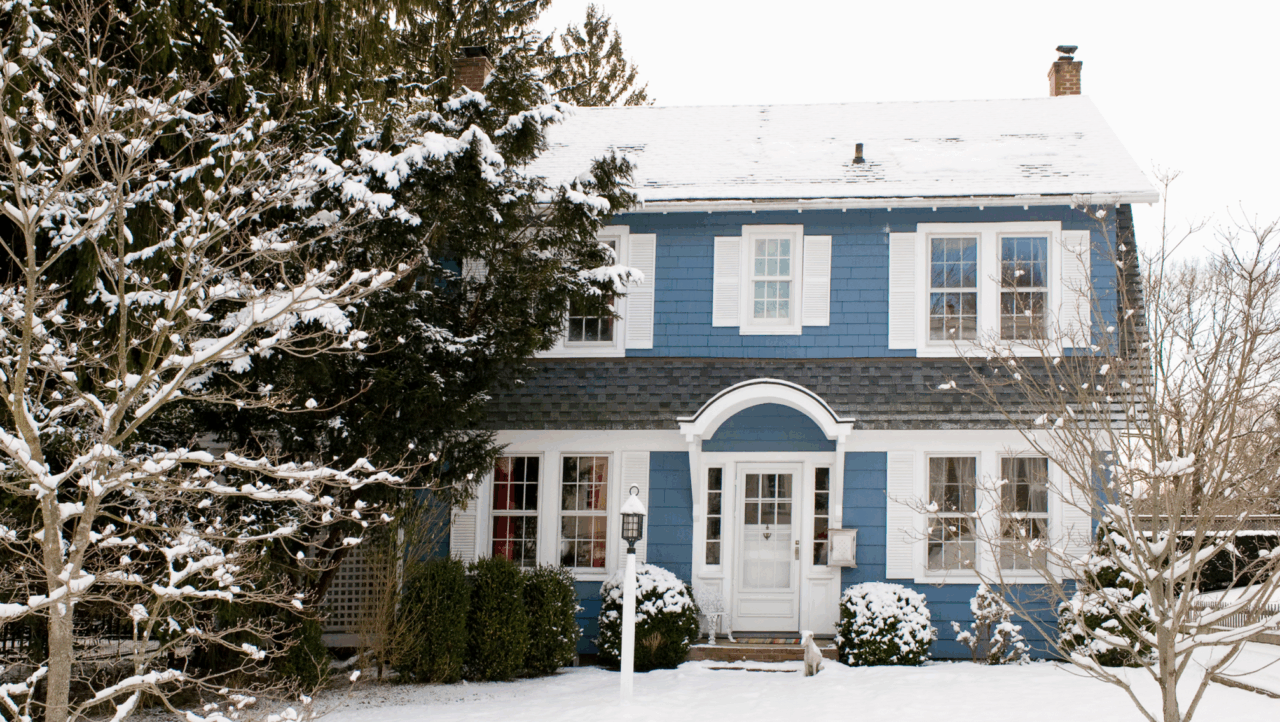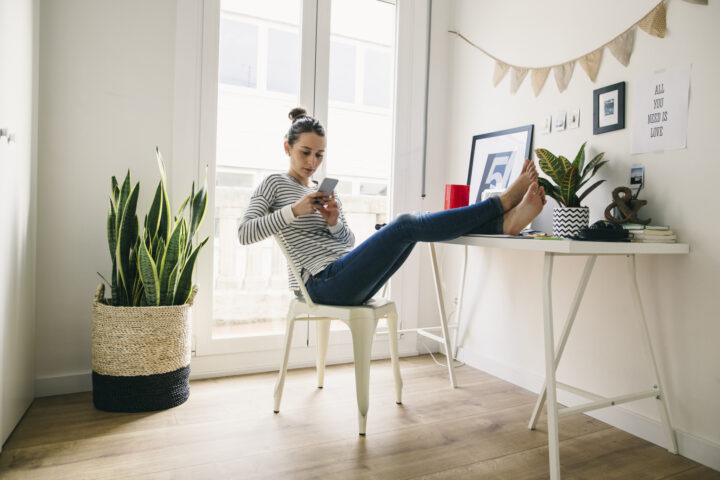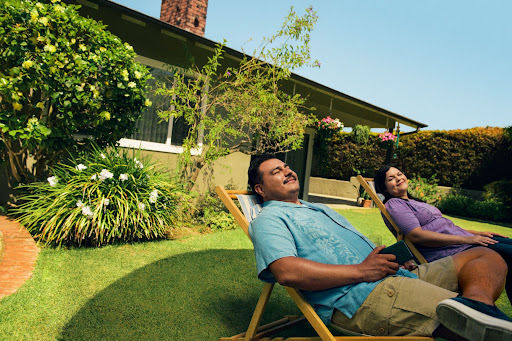How to Stage a Living Room
Nail the first impression with a beautifully staged living room — no professionals required!
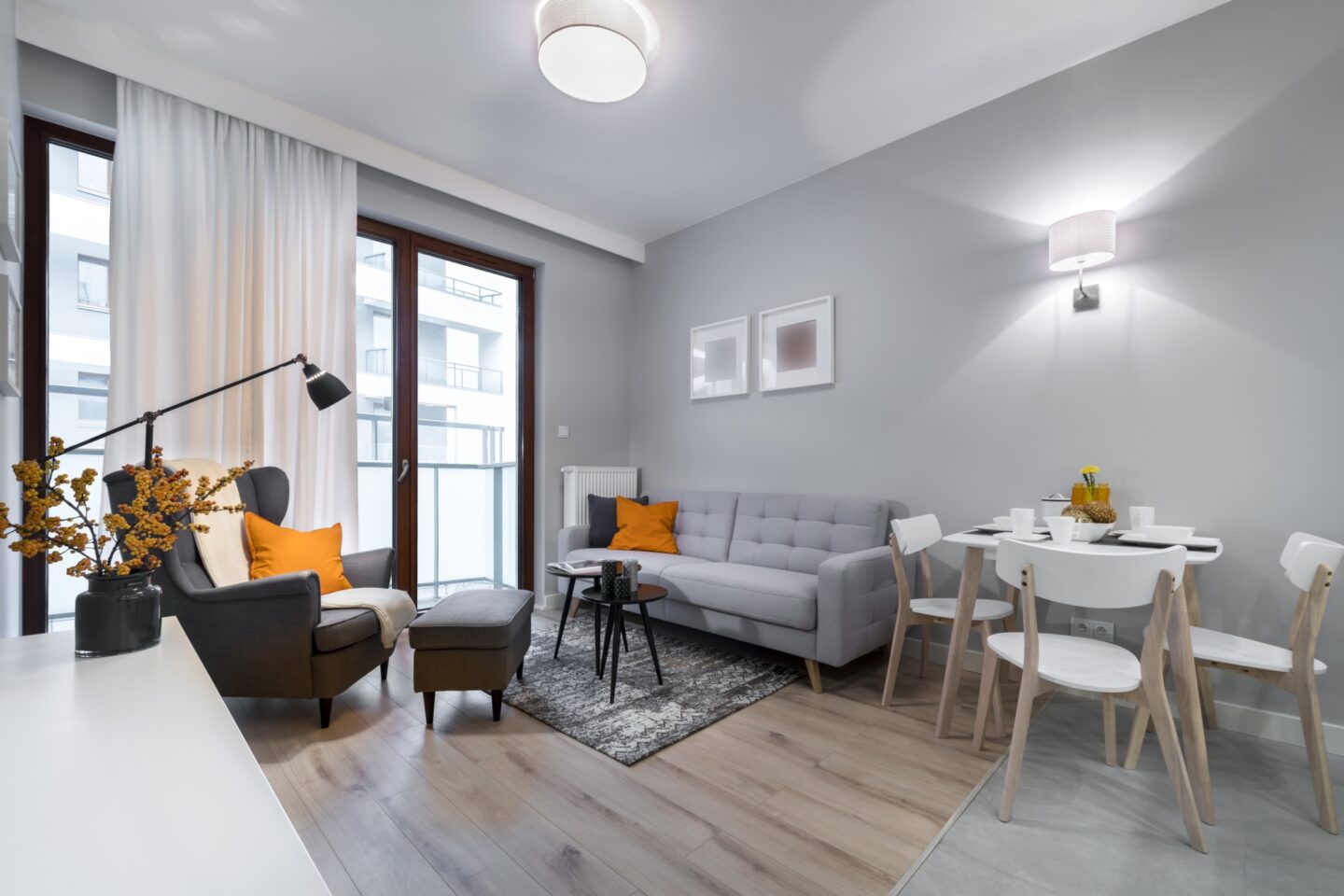

Written by Shawnna Stiver on May 8, 2025
A lot of time and money goes into preparing your home to sell. On average, 65% of U.S. home sellers take on at least two home improvement projects, spending an average of $5,400, according to 2022 research commissioned by Zillow and conducted by The Harris Poll, as well as Thumbtack data for that year. And that includes all kinds of things you'd pay a professional to do, like carpet cleaning, painting, and full-service staging.
You might consider skipping certain things to save money, but certain home improvements can add value. Staging the living room can be a great investment, here’s why. It helps you portray your home in its best light, without the high costs that can come with hiring a professional to stage the entire house. How do you stage a living room effectively? Start with these steps.
1. Complete repairs
The first step in any staging effort is to complete minor repairs or fix cosmetic issues that may deter buyers.
If you have larger structural or mechanical issues that will be flagged during the buyer's inspection, decide whether you want to handle them before listing or wait until the inspection period to negotiate.
These cosmetic issues can easily be fixed to prep your living room for staging.
Polish the floors: Buff out any floor scratches and replace any damaged floorboards or tiles. If your living room is carpeted, steam clean the floors to remove any unsightly stains.
Replace lightbulbs: You want a bright living room for showings, so replace any burned-out lightbulbs. Consider upgrading to LED lights, which are brighter and last longer, or smart lightbulbs — a feature popular with buyers who are looking for smart-home amenities.
Patch walls: Before painting, repair any holes, dings or peeling paint, which will be more obvious once your house is decluttered and staged.
Update the fireplace: If you're looking for specific information on how to stage a living room with a fireplace, the first step is getting your gas fireplace inspected and cleaned. It will not only look better but also perform better during your buyer's inspection.
2. Deep clean
Deep cleaning before listing is a must because buyers search for well-maintained homes. Although many sellers focus on cleaning the bathrooms and kitchen, the living room is just as important — don't forget all the nooks and crannies.
Clean lighting: Spiders love to hang out in light fixtures, especially recessed lighting. Use a handheld vacuum or a long broom to clear them out. You'll also want to dust any fixtures or chandeliers.
Scrub baseboards and molding: Clear dust from baseboards and moldings. They may need to be repainted if there are chips and scratches.
Steam carpets: Steam clean wall-to-wall carpets to eliminate odors or stains. This is especially important if you have kids or pets at home.
Clean windows: Dirty windows limit natural light and can make a living room seem unkempt. Clean windows with a water-vinegar mix and a squeegee. Don't clean them while they're in direct sunlight — they'll dry too quickly and leave streaks.
Freshen furniture: Make sure any furniture pieces you're going to be staging are clean and odor free. Steam clean what you can and use a household fabric refresher to remove smells from sofas, curtains, or rugs.
3. Plan the design
Living rooms are a magnet for clutter because they often serve multiple purposes — lounging, playing, snacking, socializing, or studying. But personal items lying around make it difficult for the buyer to picture themselves and their belongings in the home.
When you're staging a living room for sale, you may want to store collectibles, personal mementos, or even unnecessary or large pieces of furniture that can make the room look smaller. Consider renting a local storage space or getting a portable storage unit that you can move to your new home when you're ready.
When you take the DIY staging route, you'll want to hold on to most of the essential items that make up the typical living room layout — like a sofa, chairs and a coffee table. You'll save money on storage costs, and you won't have to rent furniture.
Here’s a quick guide to which pieces to keep and which to store as a way to avoid living room staging mistakes:
Keep:
- One set of living room furniture (including a sofa, side chairs and coffee table) in a neutral color palette that will appeal to the widest range of buyers
- Enough artwork to make the home appear furnished and lived in
- Small decor pieces to add visual interest
Store:
- Furniture or decor that appeals only to very specific tastes
- Furniture in bold patterns or loud colors
- Heavy window treatments (opt instead for sheer curtains that let in more natural light)
- Collectibles (they can make a living room look cluttered, and your collection won’t appeal to most buyers)
- Family photos or personal keepsakes can make it hard for buyers to picture themselves in the space
- Large wall quotes, which are outdated and pull attention away from the room’s features
4. Paint
Painting is one of the most popular home staging tasks, with 32% of sellers completing some sort of painting project prior to listing, according to a 2024 Zillow survey.
Painting is an inexpensive task, and even if you're not a big DIYer, you should still be able to complete a living room painting project.
Just like choosing furniture to stage a living room, you'll want to choose a color that appeals to most buyers, but don’t sleep on a moody hue. Zillow's 2023 Paint Color Analysis Webinar revealed that homes with dark gray living rooms can bring in offers of $1,755 more.
Tips for DIY living room painting
- Get a sample first. Paint looks different in every space and at different times of the day.
- Invest in high-quality brushes, rollers and other materials.
- Take the time to prep. Sanding, priming and taping lead to a high-quality finished product.
- Opt for quality paint. A flat finish is best for living rooms.
- Keep consistent undertones. While cool gray is a popular paint color, it might not match the rest of the home if you have warm-toned floors and furniture. Instead, go with a warm white or greige — a combination of beige and gray.
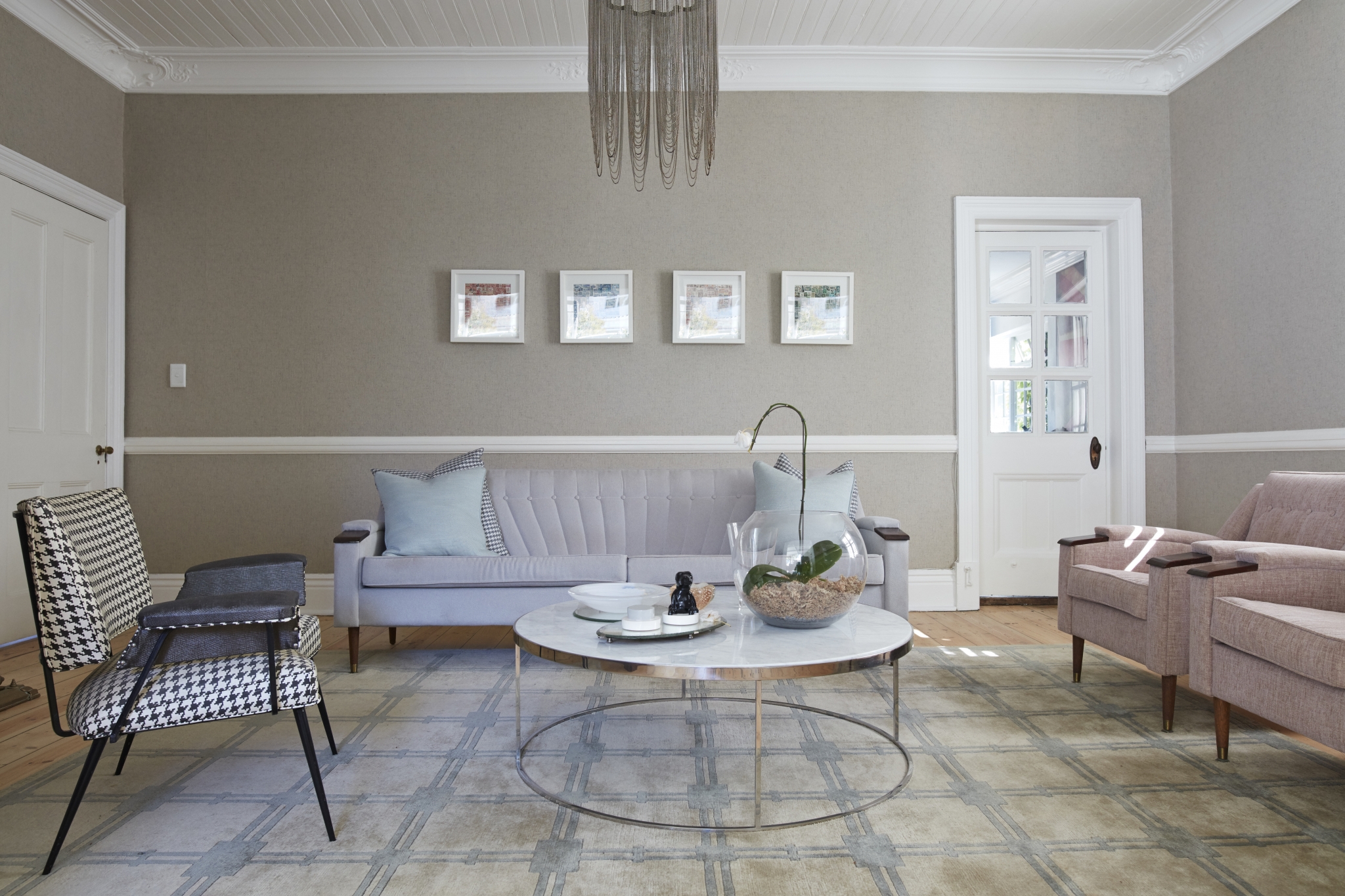
5. Stage furniture
You're not just selling a home; you're selling a lifestyle. Arrange the furniture to set some sort of a scene. Maybe it's a family lounging around the television or an engaged couple hosting their first formal gathering.
To find living room staging ideas that will be the most successful, think about your target buyer. Who's buying in your neighborhood? Who's your house well-suited for? Is it a young couple looking for a starter home? A solo young professional? A family with kids?
You have to work with what you already have, so don't try to create a look that's totally at odds with your home's style.
How to stage furniture in a living room
- Float the furniture away from the walls to make the room look bigger.
- Give a purpose to awkward spaces. For example, add a desk or a sofa table to an empty wall or create a reading nook near a window.
- Hang a mirror opposite a window to create more natural light and brighten up the room.
- Decide what your room's focal point is (like the fireplace), then build your layout around it.
6. Add decor
The last step in staging your living room is adding decor that makes it feel like home. You may be able to use some of the accent pieces you already own, but replacing them can also be fairly inexpensive at big-box stores, discount home decor shops or thrift stores.
You can always reuse what you buy in your new house. Consider this checklist for DIY home staging decor.
Stage the coffee table
Even if your coffee table is dated, it can be dressed up with decor or stained or painted for a fresh new look.
Stage the mantle and fireplace surround
Without doing a huge overhaul, you can freshen up the fireplace (which is a huge focal point for a living room) by cleaning it out or whitewashing the brick surround. Add a few tasteful accent pieces that draw the eye to the mantle.
Install new hardware on built-ins
A quick and inexpensive fix, adding new hardware to built-ins can really update a living room.
Add a new area rug
Purchase an inexpensive area rug that fits the space and the color scheme. A well-sized rug (where the front edge of all furniture pieces covers the edge of the rug) can give the room a cohesive feel.
Add a touch of color with accent throws
Update the color scheme in your living room with new slipcovers for your throw pillows and a new throw blanket or two to drape over sofas and chairs for a comfortable, homey look.
Modernize light fixtures
Light fixtures can be easy to replace and somewhat inexpensive. Plus, you can either sell them with the home or bring them with you to your next place. Choose fixtures that match the style and period of the home.
Emphasize architectural details
Play up unique architectural features of your home — things that should stand out to buyers immediately when they walk through the door. Here are a few examples:
- Draw the eyes upward with high-hanging mirrors or artwork to highlight rustic beams.
- Open the drapes and blinds to show off large windows.
- Bookend the fireplace with floor plants or large pottery, or stage surrounding built-ins with books.
Don't fear color
Follow the 60-30-10 rule: The wall color and area rug should be the dominant neutral color (60 percent of the room). Furniture can be your secondary neutral color (30 percent), and accents like throw pillows, blankets, vases and frames can be a bright and cheerful color (10 percent).
Remember that while the goal is to appeal to the largest number of buyers, you still want everyone to feel happy and energized when they walk through the door. On top of a mostly neutral palette, a few touches of navy blue, Kelly green or coral can go a long way.
Add greenery
Bring life and energy to the room with plants — either faux plants, like a fiddle-leaf fig tree in a basket, or real plants that won't require much maintenance. Succulents for a coffee table centerpiece or cut flowers in a vase are lovely touches.
Create vignettes using the rule of three
A vignette is a group of eye-catching objects that set the tone for a room. They work especially well on a coffee table or grouped together on a tray. Groupings of three are the most pleasing to the eye. Here are some examples:
- Unlit candles in a vase, surrounded by pine cones, for a winter vignette
- A table lamp, fresh flowers in a short vase and a crystal on a side table
- A stack of two books, a small potted plant and a table clock
Tags
Ready for a new address?
Get an instant cash offer or list with a local partner agent.
Explore selling optionsRelated Articles
Sell your home with a winning strategy
Here’s how to maximize your home sale with the right selling plan.

Build a smart selling plan
Talk to your agent about their marketing approach - especially online - to ensure you’re getting the best possible price for your home.
